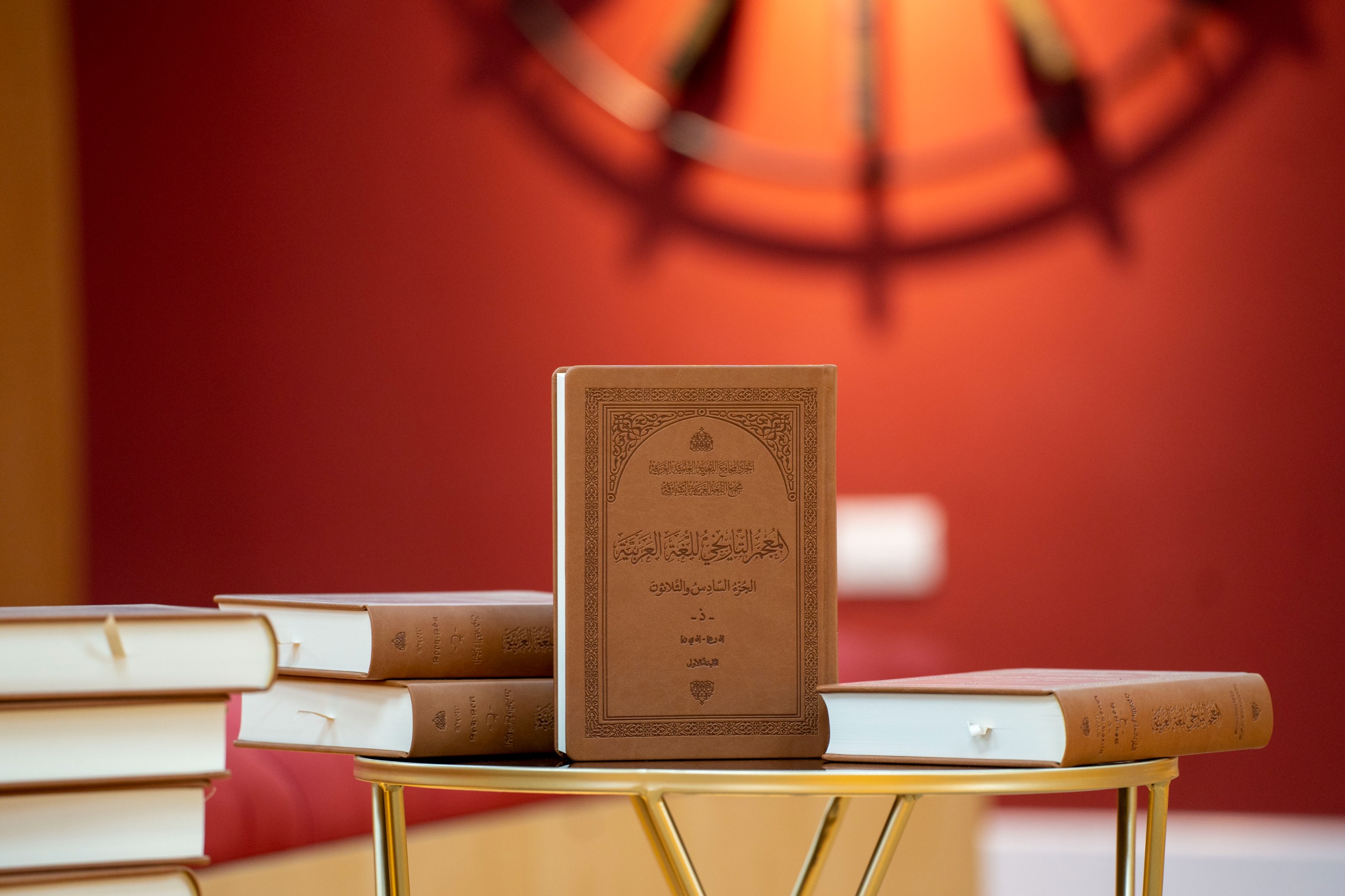
[ad_1]

Have we ever wondered about the origin of the words we use every day? How did it come to us over time? What is the connection between our Arabic language and other languages that seem completely different from ours? The answers lie in the depths of the Historical Dictionary of the Arabic Language, a huge linguistic treasure that provides a compass for every researcher and reader and opens new horizons for understanding the history of different civilizations and peoples. Through it, the East leads the world. Published in 67 volumes and available to readers on an official website open to everyone, this is the effort of the Arabic Language Academy to present the book to Arab countries and the world.
The Arabic Historical Dictionary is more than just a dictionary; it is an Arabic historical dictionary. It is a broad gateway to a world of knowledge through which we can trace the roots of the Arabic language, discover its legacy, and thus enhance our understanding of human civilization. Readers of all cultures and backgrounds can benefit from the dictionary’s scientific content in many ways, including:
*Tree
Genealogy is not limited to humans, but also extends to words. This dictionary is a detailed map that reveals to us the kinship between Arabic words and their counterparts in other Semitic languages, such as Aramaic, Hebrew, Syriac, etc. For example, according to the dictionary, the Arabic word “twin” finds its counterpart in Akkadian, meaning “one born from the same womb with another”, in Aramaic “tuma”, in Hebrew “ta’um”, and in Syriac “ta’ama”, which confirms the depth of the common roots of these languages and their history.
*monitor
The dictionary reveals to us the chronological history of words, tracing the birth of each word and the development of its meaning. For example, the word “wages” is associated in our minds with the wages of workers, but it did not have this meaning in earlier times. The dictionary shows that its use in this sense began in the Abbasid era, as recorded in the text of Al-Mu’tadid Billah. Similarly, the word “manager”, which we associate with management today, had a completely different meaning in Islam. In the era, it referred to a merchant in whose hands goods rotated throughout the day. Through these examples, we clearly realize the importance of dictionaries in understanding the development of the Arabic language through the ages.
* Treasure
The dictionary represents a treasure trove of heritage and knowledge. Since between its pages lies the history of Arab civilization and literature, it does not limit itself to recording words and their meanings, but penetrates the depths of literary and poetic texts, revealing to us a wealth of prose and poetic images. The richness of our language makes it a reference for every researcher of the Arab heritage and its literature.
The Arabic Historical Dictionary allows researchers to distinguish between original Arabic words and words that entered the language from other languages. It clarifies the nature of the words generated, those spoken by those who have no evidence of using their own words, those coming from those who appeared after the second century in the region or after the fourth century in the peninsula, unless they are from first century Arabic, such as the word “chat-chat”, and Arabic words used by non-Arabic languages, which the Arabs adopted and measured against it, such as “bridle” and “plaster”. Loanwords, that is, all foreign words outside the Arabic language system, such as “Istabraq”, and contemporary modern words, such as “al-muhadhar” and “airways”. The distinction between different types of words helps us understand the influence of Arabic on other languages, which confirms the richness of the Arabic language and its interaction with its geographical environment and beyond.
[ad_2]
Source link


